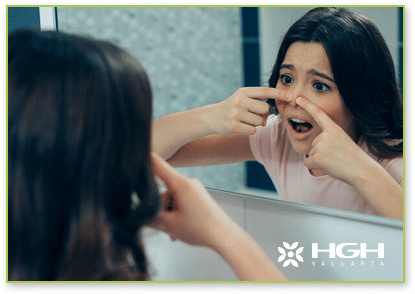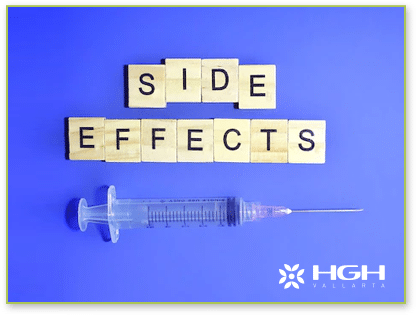- Shipping to your hotel in mexico

Precocious puberty involves a child’s body reaching puberty before age 8 (for girls) and age 9 (for boys). When present, young children begin to exhibit tell-tale signs of adulthood, such as a deeper voice, facial hair, menstruation, and accelerated growth. Often, doctors prescribe gonadotropin-releasing hormone to manage these symptoms. Unfortunately, this can have adverse effects on adult height, which is where growth hormone comes in.

Doctors are still unraveling the mysteries behind precocious puberty, but one thing is clear: hypothyroidism plays a significant role in driving this early onset puberty. It typically triggers an overproduction of gonadotropins, leading medical interventions to focus on this hormone. In certain instances, infections or abnormalities/injuries in the brain can also lead to precocious puberty, adding layers to this complex condition.

Symptoms include:
• Breast growth
• Early onset of period
• Enlarged reproductive organs
• Facial hair and deepening voice
• Development of pubic or armpit hair
• Acne
• Rapidly accelerated growth
• Body odor

In order to get a proper diagnosis, your child’s doctor will need to conduct a variety of tests. These exams may include:
• A comprehensive review of your family medical history
• A physical
• X-rays of the hand and wrist
• Gonadotropin-releasing hormone stimulation test
Depending on the results, your child may receive an official diagnosis of central or peripheral precocious puberty. Afterwards, treatment can begin.

Treatment is highly specific to each case. Therefore, your child may need immediate medical intervention, or a doctor may want to wait and monitor progress. Medical treatment typically involves something called gonadotropin-releasing hormone (GnRH) analog therapy. In this process, a child experiencing precocious puberty injects GnRH medication once a month until they reach the normal age of puberty. Additionally, your child can get a surgical implant that releases medication on schedule. Treatment ends when a doctor determines your child can begin regular stages of puberty.

Kids on GnRH analog therapy usually face growth issues. Even without GnRH, they might end up shorter than most, falling below the fifth percentile in adult height. That’s where growth hormone therapy comes into play.
A combination of recombinant growth hormone and GnRH treatment can maintain normal growth patterns. Studies show this combination leads to higher growth frequencies than GnRH therapy alone.

First of all, side effects of gonadotropin-releasing hormone analog therapy include:
• Headache
• Hypoestrogenism
• Osteoporosis or bone density issues with long-term treatment
Additionally, look out for the following with use of growth hormone therapy:
• Rash, redness, or pain at injection site
• Fever
• Progression of existing scoliosis
• Insulin resistance
• Any edema
Studies show that HGH and GnRH analog therapy are safe for a lot of people with central precocious puberty. But remember, like with any medical treatment, it’s super important to do it under a doctor’s watchful eye.

Unfortunately, many insurance companies don’t cover growth hormone therapy. In order to get coverage, one must prove growth hormone is a medical necessity.
Dealing with precocious puberty can be tricky to prove, especially since kids naturally grow at different paces. This means insurance companies might not cover treatments, claiming it’s just a part of normal growth. Unfortunately, this leaves parents facing huge bills, sometimes thousands a month, all out of their own pockets.
Fortunately – we’ve got you covered. The cost of growth hormone therapy in Mexico is significantly cheaper. Without Big Pharma hiking prices, the same medication in Mexico costs a fraction of what it sells for in the USA. You can even afford a vacation to Mexico, meet with an endocrinologist, get medication, and fly home for less than the cost of growth hormone therapy in America.